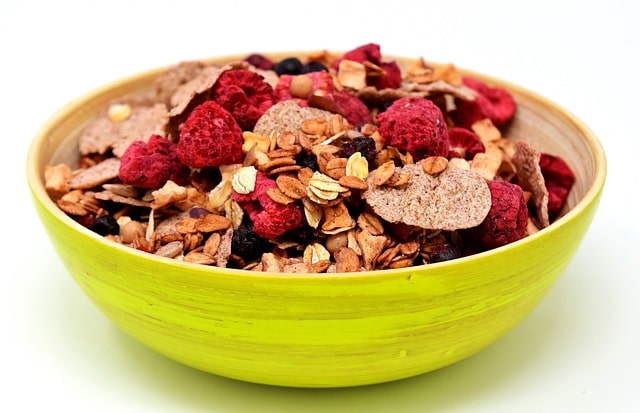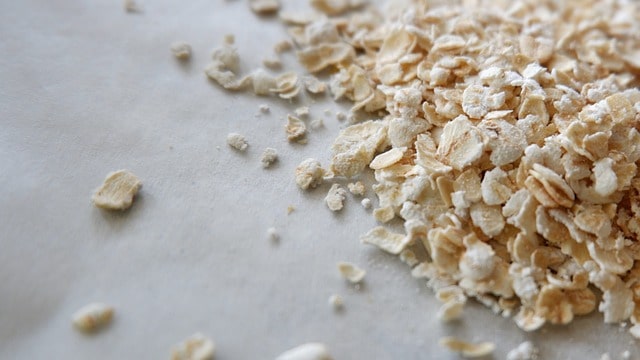
Does oatmeal give you gas?
Does Oatmeal Give You Gas?
Oatmeal is a staple in many health-conscious diets and is renowned for its beneficial properties. Packed with essential nutrients and fiber, oatmeal is often recommended as a breakfast food that can keep you satiated and provide a slow release of energy throughout the morning. However, despite its numerous health benefits, some people find that eating oatmeal can cause an uncomfortable side effect: gas. In this article, we will explore the reasons why oatmeal might give you gas and how to prevent this from happening so you can continue to enjoy this wholesome food.
Understanding Digestion and Gas
Before we delve into the specifics of oatmeal and gas, it’s important to have a basic understanding of digestion and what causes gas in the first place.
The Digestive Process
Gas is a natural by-product of the digestive process. As food breaks down in the intestine, gas is produced from the action of bacteria on the food matter. Everyone has gas and eliminates it by burping or passing it through the anus. However, certain foods can increase the amount of gas your body produces, which can lead to discomfort and bloating.
Complex Carbohydrates: Foods high in complex carbohydrates, like oatmeal, require more effort from your digestive system.
Fiber Intake: A high intake of dietary fiber can lead to increased production of gas.
Types of Fiber: There are two types of fiber: soluble and insoluble. Both can have different effects on gas production.
Why Gas Happens
Many factors contribute to the production of gas after eating, including how your body as an individual digests certain foods to the mix of bacteria in your digestive tract.
Enzymes and Bacteria: Not all carbohydrates are easily digested by enzymes in the small intestine. When undigested food reaches the colon, bacteria feed on it, producing hydrogen, carbon dioxide, and, for some people, methane. This leads to the sensation of gas.
Individual Sensitivity: Some people may be more sensitive to certain foods and experience gas as a symptom more intensely.
Quantities Consumed: The amount of food consumed can also influence gas production. Larger quantities of hard-to-digest carbohydrates will result in more gas.
Health Benefits of Oatmeal
Oatmeal has long been commended for its health benefits. It’s a highly nutritious food, offering protein, soluble fiber, and minerals.
Key Nutrients in Oatmeal
Beta-Glucan: Oatmeal contains beta-glucan, a type of soluble fiber that’s particularly effective at lowering cholesterol and making you feel full.
Antioxidants: Oats are also a fantastic source of antioxidants, which can protect against heart disease and certain cancers.
Understanding the positive aspects of eating oatmeal can help weigh the pros versus the cons if you find it gives you gas.
Oatmeal and Gas
Many people experience gas after eating oatmeal, and while this can be inconvenient, it’s a common reaction to the high fiber content in the oats.
The Role of Fiber
Oatmeal contains a substantial amount of soluble fiber. The soluble fiber in oatmeal is what leads to gas in several ways:
Bacterial Fermentation: Soluble fiber is fermented by bacteria in the large intestine, leading to gas.
Water Absorption: It absorbs water, which can increase stool bulk and gas as your body adjusts to increased fiber intake.
Gradual Adaptation: If you suddenly increase the amount of fiber in your diet, your body may produce more gas than usual.
Types of Oats
The type of oats may also play a role in how much gas they cause. Instant oats, steel-cut oats, and rolled oats differ in processing and may also vary in their propensity to cause gas.
Steel-Cut Oats: Less processed, may cause less gas because they’re consumed more slowly.
Rolled Oats: Partially cooked, making them easier to digest than steel-cut oats but possibly causing more gas than slower digesting varieties.
Instant Oats: Most processed, broken down the quickest in the digestive system, and may cause the most gas.
Individual Differences
Each person’s digestive system reacts differently to foods. Some people might be able to eat oatmeal without any issues, while others might find that it causes more gas. Possible reasons include:
Gut Flora: Different balances of gut bacteria may make some people more susceptible to gas from oats.
Digestive Enzymes: Having fewer enzymes to break down fiber could also lead to more gas when eating fiber-rich foods like oatmeal.
Managing Oatmeal-Induced Gas
If you love eating oatmeal but want to cut down on the gas it produces, there are steps you can take.
Tips to Reduce Gas
Gradual Fiber Increase: Increase your fiber intake slowly to allow your digestive system time to adjust.
Adequate Fluid Intake: Drink plenty of water when eating high-fiber foods to help fiber move through your digestive system more easily.
Detailed Journaling: Keep track of what you eat and any symptoms you experience to pinpoint whether it is indeed the oatmeal that’s causing gas.
Proper Cooking: Make sure to cook your oatmeal thoroughly. This can make it easier to digest.
Avoid Mix-ins: Sometimes the add-ins you put in your oatmeal, like milk or artificial sweeteners, may be the real culprits for causing gas.
Conclusion
While oatmeal can indeed be a cause of gas due to its high soluble fiber content, this should not necessarily discourage you from enjoying its health benefits. Modifying your intake, ensuring adequate hydration, and pacing your fiber increase can help manage and minimize the potentially gassy effects of oatmeal. Remember that each person is different, and what might cause gas in one person might not in another. Being aware of how your body responds to oatmeal and adjusting your consumption accordingly will enable you to maintain a nourishing diet without those uncomfortable side effects. Knowing your body and how it digests different foods are crucial to enjoying the vast nutrients that foods like oatmeal have to offer without discomfort.


